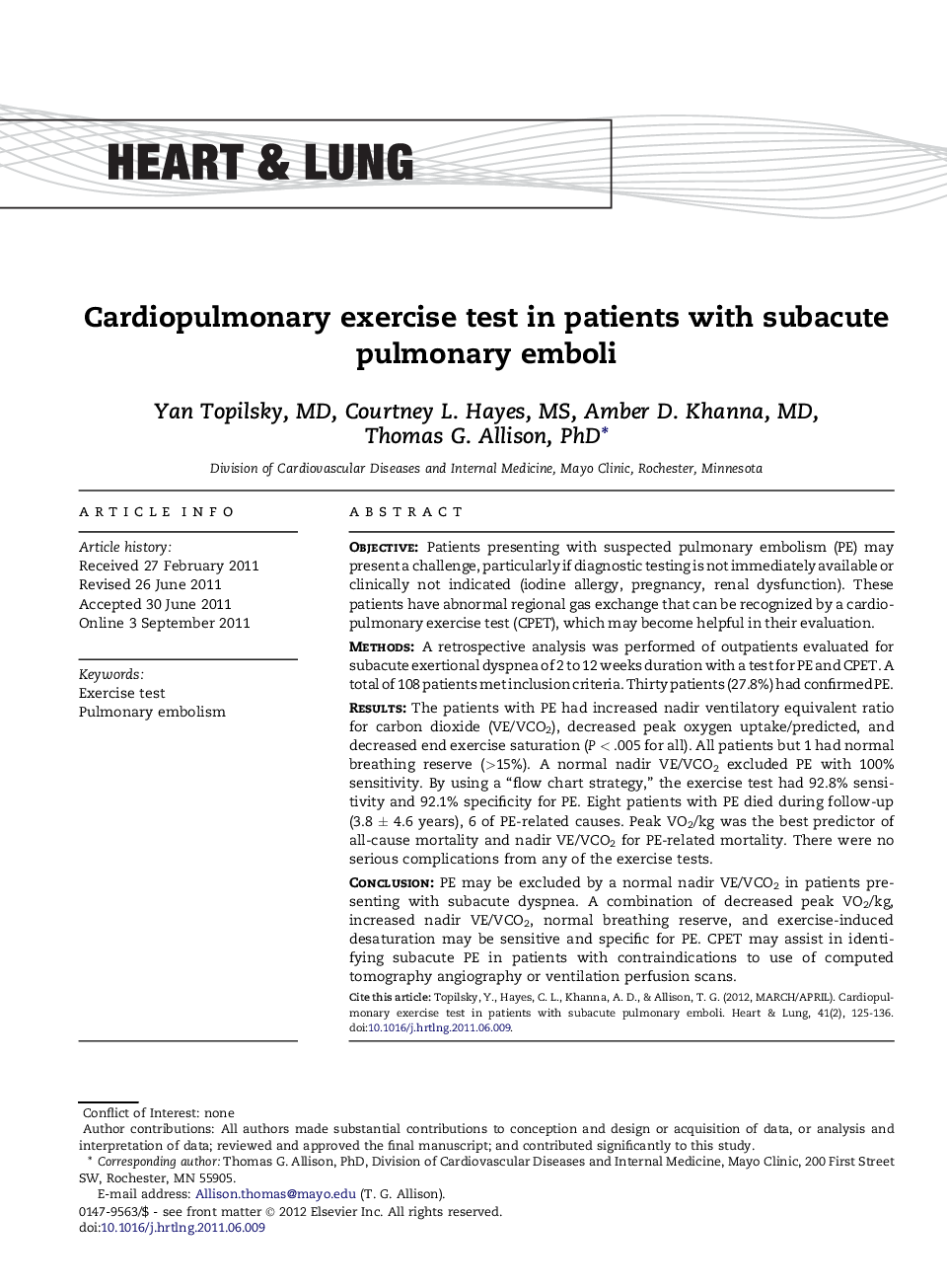| Article ID | Journal | Published Year | Pages | File Type |
|---|---|---|---|---|
| 2650724 | Heart & Lung: The Journal of Acute and Critical Care | 2012 | 12 Pages |
ObjectivePatients presenting with suspected pulmonary embolism (PE) may present a challenge, particularly if diagnostic testing is not immediately available or clinically not indicated (iodine allergy, pregnancy, renal dysfunction). These patients have abnormal regional gas exchange that can be recognized by a cardiopulmonary exercise test (CPET), which may become helpful in their evaluation.MethodsA retrospective analysis was performed of outpatients evaluated for subacute exertional dyspnea of 2 to 12 weeks duration with a test for PE and CPET. A total of 108 patients met inclusion criteria. Thirty patients (27.8%) had confirmed PE.ResultsThe patients with PE had increased nadir ventilatory equivalent ratio for carbon dioxide (VE/VCO2), decreased peak oxygen uptake/predicted, and decreased end exercise saturation (P < .005 for all). All patients but 1 had normal breathing reserve (>15%). A normal nadir VE/VCO2 excluded PE with 100% sensitivity. By using a “flow chart strategy,” the exercise test had 92.8% sensitivity and 92.1% specificity for PE. Eight patients with PE died during follow-up (3.8 ± 4.6 years), 6 of PE-related causes. Peak VO2/kg was the best predictor of all-cause mortality and nadir VE/VCO2 for PE-related mortality. There were no serious complications from any of the exercise tests.ConclusionPE may be excluded by a normal nadir VE/VCO2 in patients presenting with subacute dyspnea. A combination of decreased peak VO2/kg, increased nadir VE/VCO2, normal breathing reserve, and exercise-induced desaturation may be sensitive and specific for PE. CPET may assist in identifying subacute PE in patients with contraindications to use of computed tomography angiography or ventilation perfusion scans.
